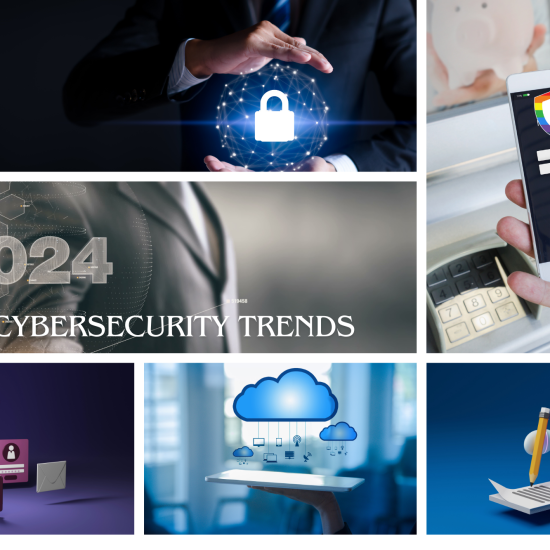Navigating the Cloud: Challenges, Threats, and Best Practices in Cloud Security
As organizations increasingly migrate their operations to the cloud, the need for robust cloud security has become paramount. The benefits of scalability, cost-efficiency, and accessibility offered by cloud computing come hand in hand with new challenges, threats, and vulnerabilities. In this article, we will explore the latest developments in cloud security, highlighting challenges faced by organizations, emerging threats, vulnerabilities, and best practices to secure cloud environments.
In this article, you will read about:
Challenges in Cloud Security
Threats in Cloud Security
Vulnerabilities in Cloud Security
Best Practices for Cloud Security
How can Rainbow Secure help?
Challenges in Cloud Security
Challenges are the gap between theory and practice. It’s great to know you need a cloud security strategy. Some challenges faced by cloud are:
- Insecure APIs and Third-Party Software
Third-party software and insecure APIs can make an enterprise more vulnerable to cyber attacks by giving unauthorized access to vital information. Research indicates that only 18% of enterprises set up appropriate permission boundaries for third-party applications, leaving sensitive data open to exploitation by the majority.
While it is common for businesses to use third-party software to improve their cloud environments and SDLCs, these applications can pose a significant security risk if not managed correctly. Third-party applications are integrated into SDLCs, and communicate with each other using APIs.
The SolarWinds breach highlighted the severe consequences of vulnerable third-party software. Malicious actors used the SolarWinds Orion Platform, an infrastructure monitoring and management tool, to insert harmful code disguised as a software patch. Over 30,000 organizations that used the platform were affected, resulting in exposed sensitive data for more than a year before the breach was noticed.
2. Managing Cloud Environments: Addressing the Challenge of Visibility
The current business landscape is characterized by cloud environments that consist of a blend of SaaS, PaaS, and IaaS components. The use of public and private clouds further complicates matters. To make things worse, on-premises data centers can result in cloud sprawl, a situation where companies lose control of their cloud resources.
Cloud sprawl can overwhelm organizations, making it challenging for them to keep track of their concurrent cloud applications and technologies, which can ultimately affect cloud security. In the past, only a few IT teams and personnel could commission new cloud assets. However, today, users can quickly expand cloud environments, leading to an increased need for centralized visibility with no blind spots.
To identify cloud security challenges, it’s essential to have a comprehensive view of compute platforms, data platforms, security and identity tools, code technologies, CI/CD tools, workloads, and APIs. Centralized visibility and real-time monitoring are critical to prevent known and unknown security vulnerabilities from becoming full-blown security disasters. Inadequate visibility can also impede incident response, resulting in delayed and cumbersome processes.
3. Cloud Data Governance
It’s common knowledge that data is a company’s most valuable asset. The cloud data network contains incredibly sensitive information, such as PII, PHI, and PCI, requiring the most robust governance and protection. Nonetheless, cloud data governance comes with its own set of challenges, including:
- Ensuring complete visibility across AWS, GCP, and Azure public buckets, data volumes, and managed databases
- Detecting any data exposure
- Understanding data flow and lineage
- Enforcing policy implementation and compliance adherence
- Identifying potential attack routes in cloud environments that lead to sensitive data and eliminating those routes are other essential challenges for businesses.
Poor data governance can have long-term consequences. According to Gartner analysts, by 2025, 80% of businesses will be unable to expand their digital operations due to suboptimal data governance.
4. Understanding Shadow IT and Its Implications on Data Security
In the world of enterprise IT, Shadow IT refers to any data not managed by IT or security teams. This data is a subset of the “Shadow IT” phenomenon, which involves using IT resources without approval, such as IaaS, PaaS, SaaS services, APIs, servers, and hardware. Shadow IT often arises in agile environments, where developers and teams bypass bureaucratic processes to quickly obtain IT resources. Although a natural byproduct of cloud growth, failure to address its security implications can result in data breaches.
5. Maintaining Multi-Cloud Security
As cloud computing continues to advance, so do the challenges surrounding cloud security. These challenges include data governance, compliance, workload misconfigurations, malware threats, IAM complexities, and visibility issues. Businesses can manage many of these risks with strong cybersecurity defenses and tolerate others as part of their risk appetite; however, adopting multi-cloud strategies can make things more complicated. Multi-cloud environments exacerbate the inherent challenges of cloud security, making it a monumental task.
Among the most significant security challenges in these multi-cloud infrastructures are IAM management and access control. IAM is a critical aspect of cloud security. Misconfigured access permissions, weak authentication processes, and inadequate monitoring can result in unauthorized users gaining access to sensitive data.
Also, you can Refer to Defining Shadow Access: The Emerging IAM Security Challenge, Cloud Security Alliance co-authored by our CISO Dhaval Shah.
Businesses must be aware of who has access to which cloud resources and why. Without this knowledge, companies cannot identify vulnerabilities, predict attack paths, or calculate the blast radius of potential cloud security disasters.
6. Data Breaches and Unauthorized Access
The risk of data breaches remains a top concern in cloud security. Unauthorized access to sensitive information can lead to severe consequences, including financial losses and damage to an organization’s reputation.
7. Compliance and Regulatory Issues:
Adhering to regulatory requirements becomes complex when data is stored and processed in the cloud. Different regions and industries have varying compliance standards, making it challenging for organizations to ensure they are meeting all necessary obligations.
Threats in Cloud Security
A threat is an attack against your cloud assets that tries to exploit a risk. Some common threats faced by cloud security are:
- Advanced Persistent Threats (APTs): APTs pose a significant risk to cloud environments. These sophisticated and persistent cyberattacks aim to gain unauthorized access to sensitive information, often remaining undetected for extended periods.
- Data Encryption Challenges: While encryption is a fundamental aspect of cloud security, challenges arise in managing and implementing encryption consistently across all layers of the cloud infrastructure, making data vulnerable during transit or storage.
- API Security Risks: Application Programming Interfaces (APIs) facilitate communication between different cloud services. However, if not properly secured, APIs can become a potential entry point for attackers, leading to data breaches and service disruptions.
- Zero-day exploits: Zero-day exploits are a serious threat that target vulnerabilities in popular software and operating systems that haven’t been patched by the vendor. Even with a top-notch cloud configuration, an attacker could exploit these vulnerabilities to gain a foothold within the environment.
- Insider Threats: Insider threats are cybersecurity threats that originate from within an organization. Usually carried out by a current or former employee or another person with direct access to the company network and sensitive data, these threats can include the theft of intellectual property (IP) and the use of knowledge of business processes, company policies, or other information to carry out an attack.
Vulnerabilities in Cloud Security
These are some vulnerabilities in cloud security:
- Misconfigurations: Human error in configuring cloud settings remains a significant vulnerability. Misconfigurations can expose sensitive data, and attackers often exploit these errors to gain unauthorized access.
- Shared Technology Vulnerabilities: Cloud services often share underlying technology and resources. Vulnerabilities in shared components can expose multiple organizations to potential security risks.
- Supply Chain Attacks: Attacks on the supply chain, including compromises in third-party services and dependencies, can impact the security of cloud environments. Organizations need to assess the security practices of their service providers and vendors.
Best Practices for Cloud Security
Some best practices that can be practiced improving your security posture and safeguard your business.
- Implement Strong Identity and Access Management (IAM): Ensure robust IAM policies, including multi-factor authentication and least privilege access, to prevent unauthorized access.
- Regular Security Audits and Assessments: Conduct frequent security audits to identify and rectify misconfigurations, vulnerabilities, and weaknesses in the cloud infrastructure.
- Data Encryption: Implement end-to-end encryption for data in transit and at rest to protect sensitive information from unauthorized access.
- Continuous Monitoring and Incident Response: Employ real-time monitoring tools to detect anomalies and respond promptly to security incidents. Establish a comprehensive incident response plan to mitigate the impact of security breaches.
- Regular Employee Training: Provide ongoing training for employees to enhance awareness of security best practices, emphasizing the importance of maintaining a secure cloud environment.
As organizations continue to leverage the benefits of cloud computing, the landscape of cloud security evolves. It is imperative for businesses to stay vigilant, adapt to emerging threats, and implement robust security measures to safeguard their data and operations in the cloud. By understanding the challenges, addressing vulnerabilities, and following best practices, organizations can build a resilient and secure cloud infrastructure for the future.
Rainbow Secure plays a pivotal role in fortifying your business against cyber threats. In an era where digital security is no longer optional but a necessity, Rainbow Secure stands as a guardian, offering robust, user-friendly, and compliant security solutions.
- Enhanced Security Rainbow Secure’s multi-dimensional approach to security, incorporating unique color and style-based authentication, has redefined the meaning of ‘secure login’. By protecting against threats like keyloggers, brute force, and phishing attacks, we ensure that the critical infrastructure sector can operate in the digital realm with confidence and peace of mind.
- Simplified User Experience Understanding that complexity is the enemy of security, Rainbow Secure has revolutionized the user experience. Our intuitive and customizable login process not only enhances security but also fosters user engagement and compliance. This ease of use is critical in ensuring that security measures are consistently and effectively implemented across organizations.
- Compliance and Regulation In today’s regulatory landscape, compliance is not just about checking boxes. It’s about protecting reputations, building trust, and ensuring long-term sustainability. Rainbow Secure helps critical infrastructure sector navigate this complex terrain, adhering to stringent standards like GDPR, HIPAA, and NIST, among others. Our commitment to compliance is a testament to our dedication to not just meeting, but exceeding, the highest standards of data protection and privacy.
How can Rainbow Secure help?
Right amount of data and system access to right person or role at right time is the key to organizations being able to use digital tools and platforms to serve the customer base and stay compliant.
Next Generation Rainbow Secure platform is a modern identity authentication (MFA) and single sign- on (SSO) solution for your business across on-premises and cloud environments. It’s backed by an experienced team of cloud and security experts, years of innovation, and partnerships with leading cloud platforms. Rainbow Secure is a Leader in Smart and Secure Digital Solutions that work for you.
Insider Threats: Rainbow Secure assists in mitigating insider threats by implementing access controls, user monitoring, and privilege management solutions. Also, if the user leaves behind unlocked devices, saved passwords in the password manager or browser can be misused by malicious insiders. Interactive login security from Rainbow Secure helps prevents unauthorized access and protects against data theft or misuse by privileged users.
ChatGPT Security for business: Secure your ChatGPT login and Data with Rainbow Secure MFA Plugin.
Secure AI Integration: Consult Rainbow Secure Team to integrate AI in your business workflows powered by Azure and Rainbow Secure API.
Secure Workforce & Customer login: Use Authentication Plug-in by Rainbow Secure to secure workforce and customer logins. In this plug-in, you get a multi-dimensional password, passwordless login solutions with AI monitoring, Risk Analytics, and location fencing.
IoT Friendly Security: IoT platform developers can secure their cloud endpoints, and user logins (both admin and customer) against unauthorized access and scripted malware attacks using easy to adapt and support multi-layer interactive rainbow secure authentication solutions and services that includes but not limited to security assessment, API Security, secure user onboarding, and risk analytics.
Secure Data and its Backups We provide Cloud based data vault and data archive solutions backed by Microsoft Azure and secured by our authentication plugin and industry best practices to give you ransomware protection, help with data governance and disaster mitigation.
Database Security We provide technical consulting services to Secure Databases in cloud and on premise. You get best protection for your data in databases using native and third-party security tools.
Meet Compliance Requirements: Use Authentication Plug-in by Rainbow Secure with your business application and in SSO (Single Sign-on) and meet industry standards and compliance regulations such as NIST, ISO, FTC, SOX, SOC2, CMMC, CMMI, HIPAA, PCI, and others.
Securely communicate and Collaborate: Use Secure Business Email by Rainbow Secure and get protection against account takeover, phishing, ransomware, and automated login cyber frauds. In this email, you get options to send encrypted emails, single sign-on with Office 365, and Google, and 1 TB one drive storage.
Connect Business applications: Get one unified login using Rainbow Secure Single Sign-On
Manage User Onboarding / Offboarding using Rainbow Secure IAM
Verify User using Smart Multi-factor MFA. Smart Multi-Factor Authentication from Rainbow Secure which adjusts to your use case, reduces the cyber liabilities of a business from stolen credentials and improves productivity, and enhances user experience.
Crafting a comprehensive approach to cloud security demands a tailored strategy, as each challenge poses distinct risks. Prior to embracing any cloud services, it is essential to invest time in meticulous planning. A well-thought-out strategy should account for the specific challenges that have been highlighted in this discussion. By doing so, organizations can develop a clear and effective plan of action for each potential challenge.
Taking a proactive stance involves acknowledging the uniqueness of each challenge and tailoring solutions accordingly. Whether it’s the risk of data breaches, compliance complexities, identity and access management concerns, or the ever-present issue of misconfigurations, a thorough strategy should encompass all foreseeable obstacles.
Trust Rainbow Secure’s innovative solutions help to enhance your security posture and safeguard your business from cyber threats and attacks? Contact us today. Email us at Hello@rainbowsecure.com






